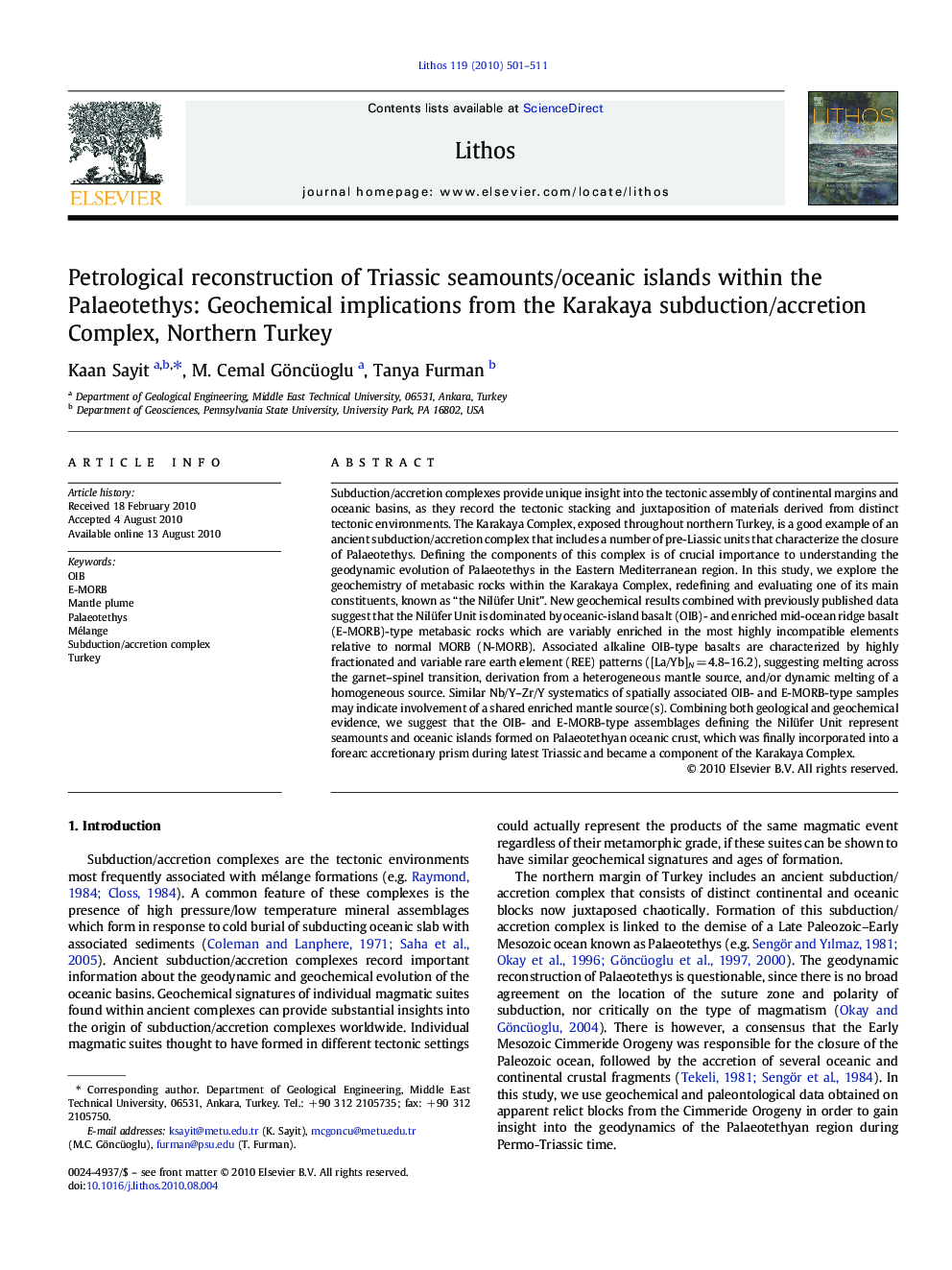| کد مقاله | کد نشریه | سال انتشار | مقاله انگلیسی | نسخه تمام متن |
|---|---|---|---|---|
| 4716889 | 1638728 | 2010 | 11 صفحه PDF | دانلود رایگان |

Subduction/accretion complexes provide unique insight into the tectonic assembly of continental margins and oceanic basins, as they record the tectonic stacking and juxtaposition of materials derived from distinct tectonic environments. The Karakaya Complex, exposed throughout northern Turkey, is a good example of an ancient subduction/accretion complex that includes a number of pre-Liassic units that characterize the closure of Palaeotethys. Defining the components of this complex is of crucial importance to understanding the geodynamic evolution of Palaeotethys in the Eastern Mediterranean region. In this study, we explore the geochemistry of metabasic rocks within the Karakaya Complex, redefining and evaluating one of its main constituents, known as “the Nilüfer Unit”. New geochemical results combined with previously published data suggest that the Nilüfer Unit is dominated by oceanic-island basalt (OIB)- and enriched mid-ocean ridge basalt (E-MORB)-type metabasic rocks which are variably enriched in the most highly incompatible elements relative to normal MORB (N-MORB). Associated alkaline OIB-type basalts are characterized by highly fractionated and variable rare earth element (REE) patterns ([La/Yb]N = 4.8–16.2), suggesting melting across the garnet–spinel transition, derivation from a heterogeneous mantle source, and/or dynamic melting of a homogeneous source. Similar Nb/Y–Zr/Y systematics of spatially associated OIB- and E-MORB-type samples may indicate involvement of a shared enriched mantle source(s). Combining both geological and geochemical evidence, we suggest that the OIB- and E-MORB-type assemblages defining the Nilüfer Unit represent seamounts and oceanic islands formed on Palaeotethyan oceanic crust, which was finally incorporated into a forearc accretionary prism during latest Triassic and became a component of the Karakaya Complex.
Research Highlights
► The basic volcanic rocks of the former Nilüfer Unit are redefined in this study. The redefined Nilüfer Unit (this study) is different than what was originally introduced by Okay et al. (1991) in terms of both extent and tectonic setting.
► This study considers the Karakaya Complex as composed of a number of mélange units, and the redefined Nilüfer Unit is one of them.
► The redefined Nilüfer Unit consists dominantly of metabasaltic rock assemblages of oceanic origin with OIB- and E-MORB-type signatures.
► The redefined Nilüfer Unit represents ancient seamounts and oceanic islands formed on the Palaeotethyan oceanic crust. A continental rift (or back-arc rift), an oceanic plateau or island-arc origin is not supported.
Journal: Lithos - Volume 119, Issues 3–4, October 2010, Pages 501–511